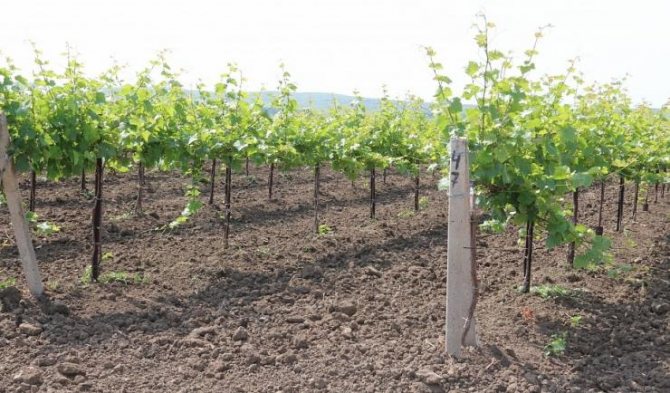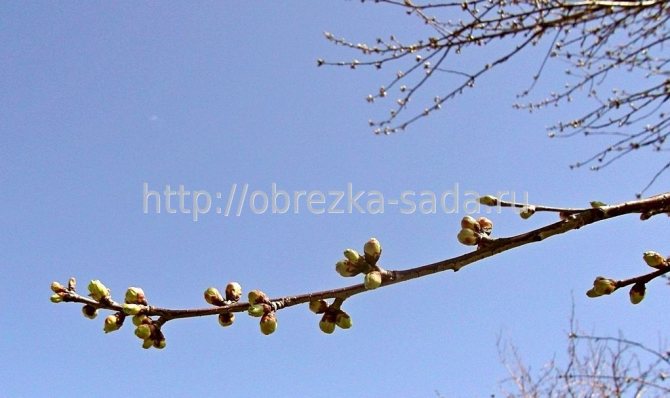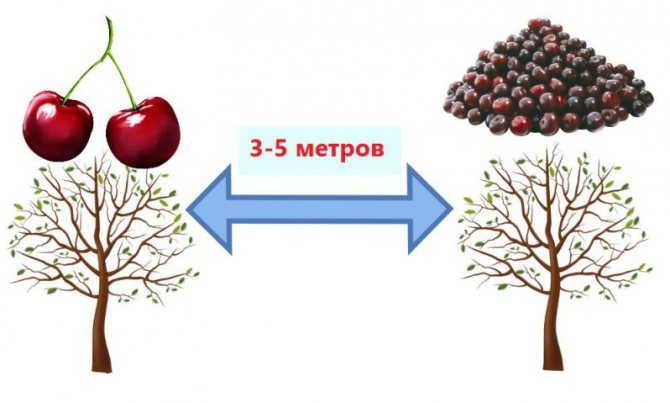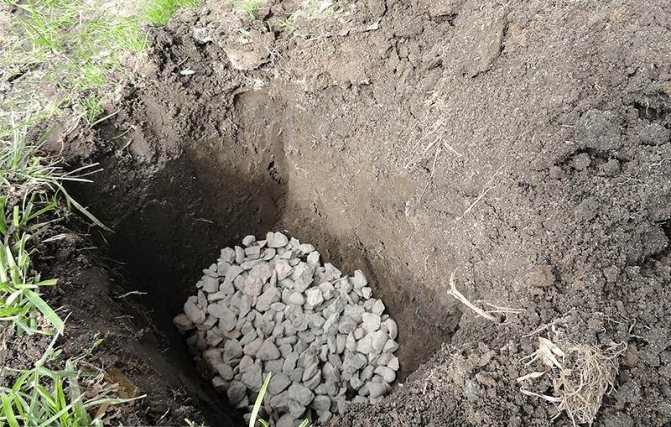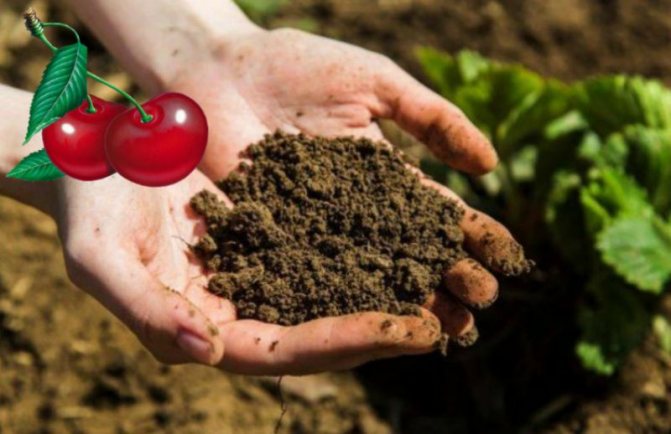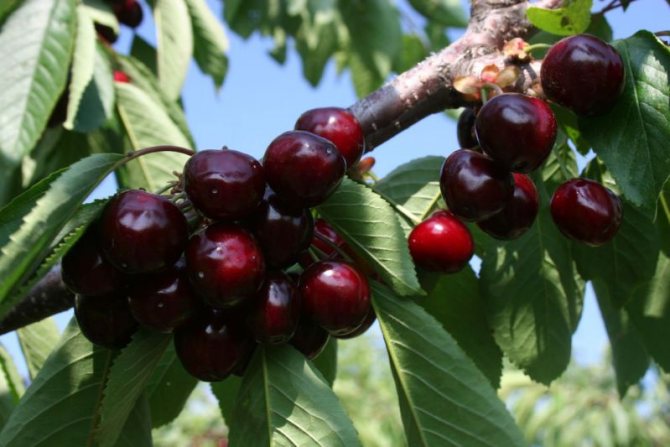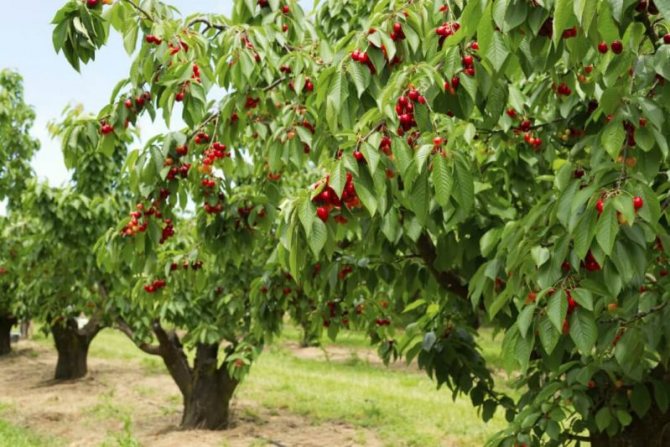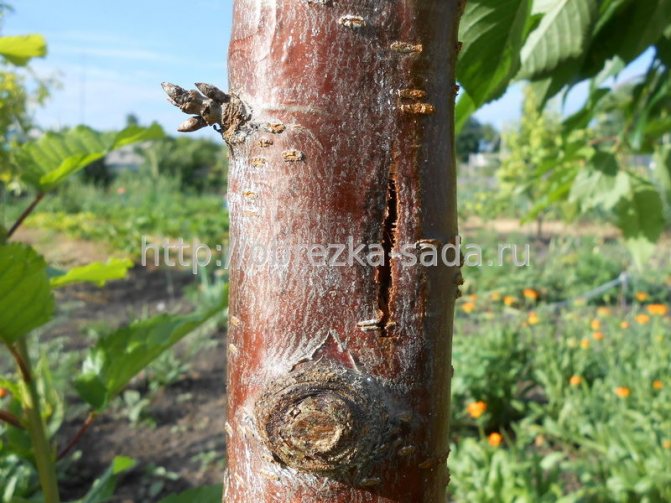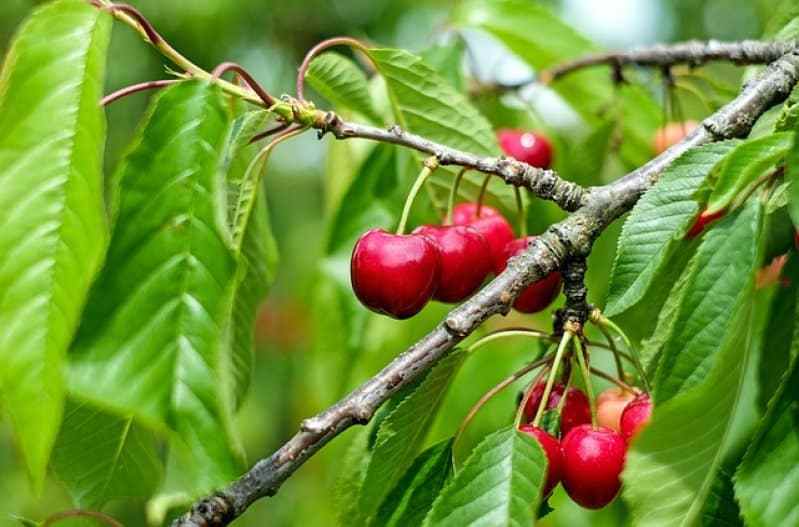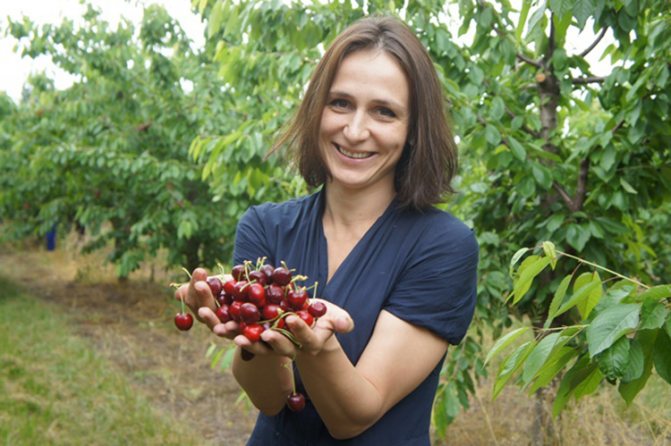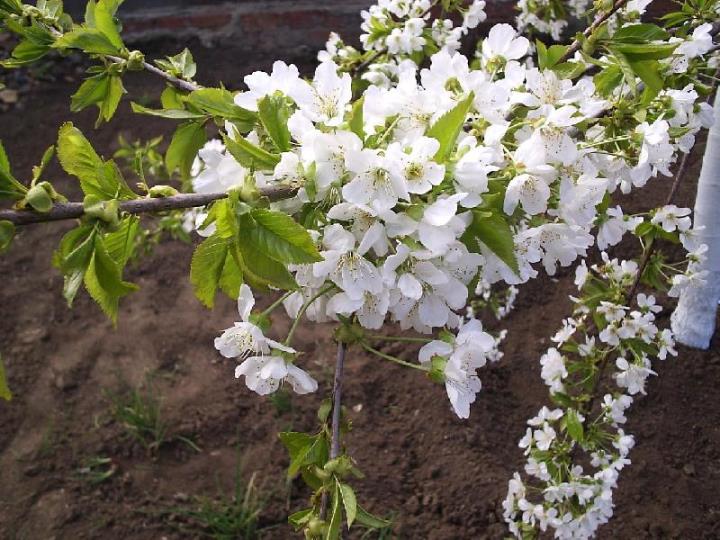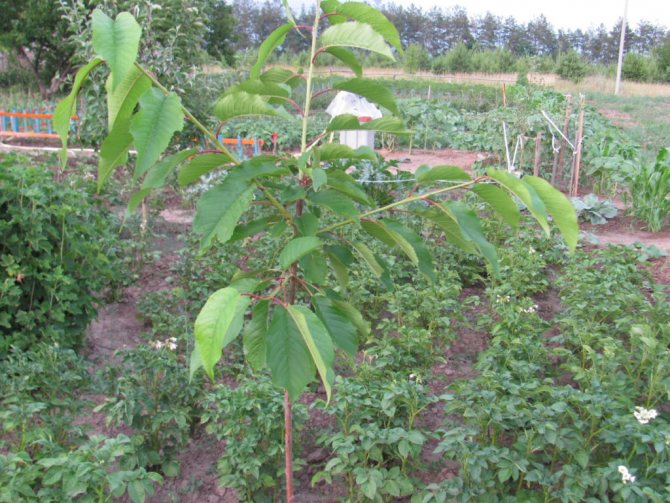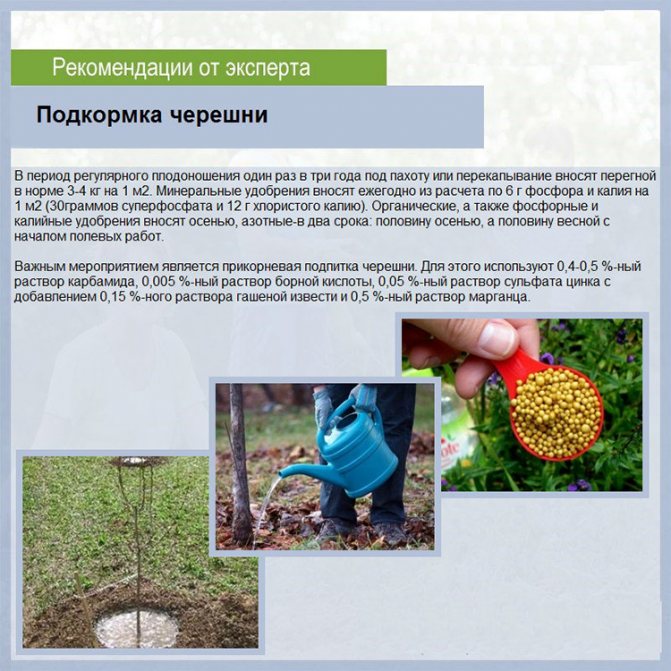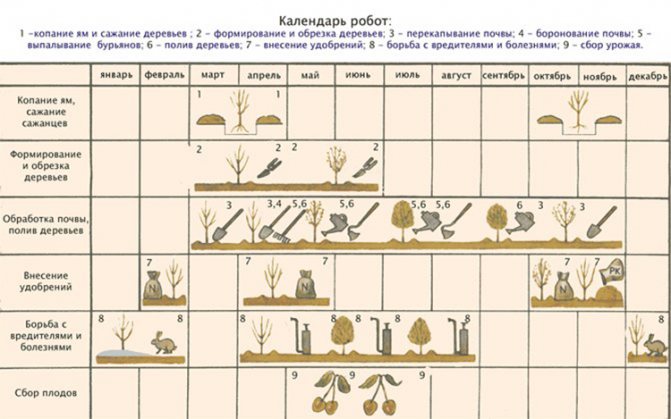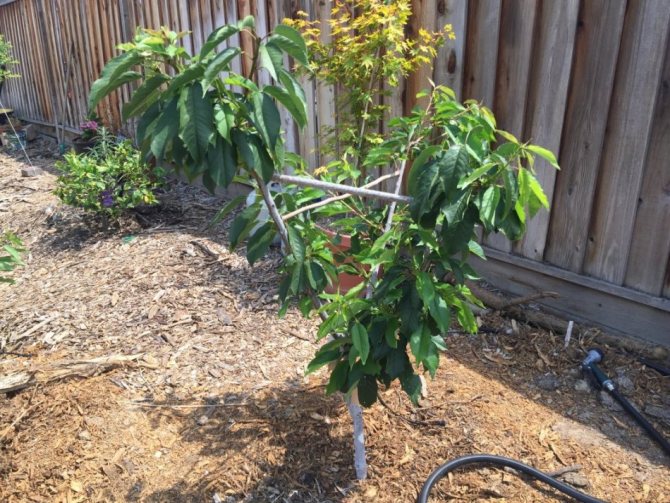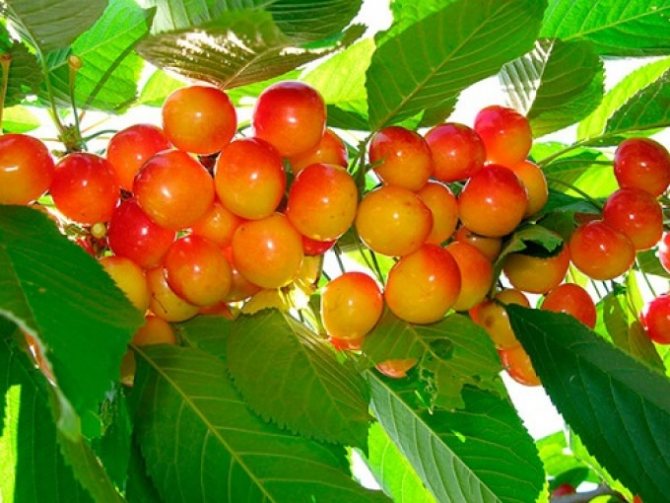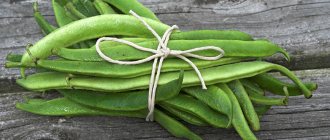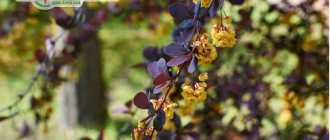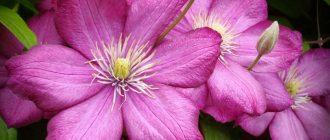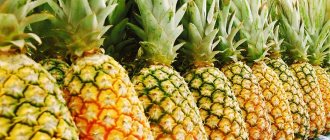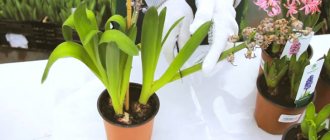Sweet cherry is famous for its incredibly excellent taste. Delicate, sweet fruits have a unique taste that will be remembered for a long time and you will want to taste it again. Homemade cherries, grown with love on their own plot, are especially tasty. To the delight of any gardener, the area of cultivation of the culture has greatly expanded recently, thanks to selection, we can grow this thermophilic crop not only in the south of the country, but also in more northern regions.

Site requirements
Cherry loves the sun and does not tolerate drafts. It is better to place her seedlings in the area that is as illuminated as possible and at the same time not blown by cold winds. The tree will be comfortable at the fence or at the southern walls of buildings. But tall varieties of cherries have a spreading crown, so it is important to leave them enough free space for development. A seedling hole is dug, stepping back from the structure at least 3-4 m.
Trees grow best on small (up to 0.5 m in height) hills, which can be arranged artificially, and in areas slightly inclined towards the south, southwest or southeast.
Here they do not lack light and warmth. You should not plant cherries in the lowlands and in those places where water stagnates for a long time in spring. In such conditions, trees die quickly. The roots of the sweet cherry are deep (up to 2 m long), and some of them are located vertically in the soil, so it does not tolerate the close proximity of groundwater.
The culture grows well and bears fruit in loose soil. Light and fertile sandy loam or loamy soils are ideal for her. They should be sufficiently moist, but not waterlogged. On peat bogs, in heavy clay soil, on rapidly drying sand with a scarce supply of nutrients, planting cherries will not be crowned with success.
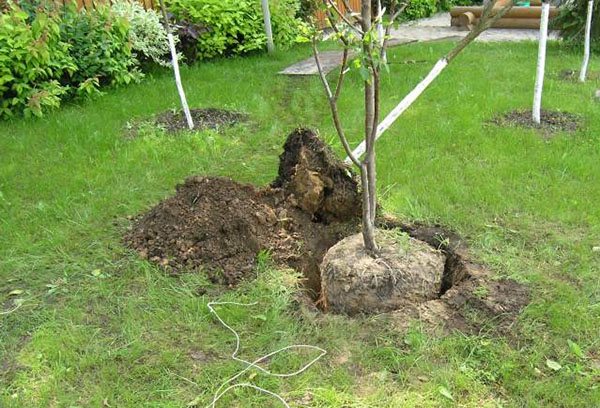

Planting in the open field caring for cherries: for beginners and experienced ones.
Large and sweet cherries are a coveted reward for the diligent gardener. The opinion was established that this fruit crop requires special conditions and increased labor costs during cultivation. Is it so? Is it possible to get your own full-fledged cherry crop when planting and nursing in the open field from a fruit seedling of a capricious heat-loving tree?
Practice proves that with the right choice of the variety and the creation of favorable conditions on the site, you can count on a good harvest.... We will analyze in detail the important aspects necessary for the abundant and long-term fruiting of cherries in your garden.
Landing time and scheme
The timing of placing trees on the site depends on the climate of the area. In the southern regions, autumn planting is more often practiced, carrying it out several weeks before the soil freezes. In Siberia and the Urals, it is better to postpone the procedure until spring. If the seedling does not have time to take root, severe frosts will destroy it.
Sweet cherry is a cross-pollinated crop. It will bear fruit abundantly only if there are neighbors. It is recommended to plant 2-3 trees on the site, representing different varieties of culture. You can do with one, but only if you place a couple of cherries with the same flowering time next to the cherry. This guide also applies to partially self-fertile crop varieties.
4-5 m of free space is left between adjacent trees. Saving space is not the best option here. When planted closer, trees will shade each other. Caring for them will also be complicated. If the cherry is columnar, the distance between the plants is reduced to 1 m.When planting such trees in rows, the interval between them should be made equal to 2-3 m.
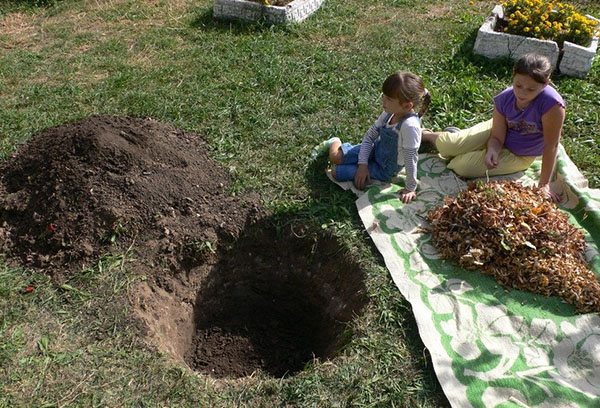

Rules for planting cuttings
When planting cherry cuttings, it is important to follow these simple rules:
- The site where rooting will take place should be as illuminated as possible, but at the same time it is reliably fenced off from the wind from all sides.
- Before planting, the leaves should be cut off from the prepared shoots, since intensive evaporation of moisture occurs from their surface, and for a plant with a missing root system, this is fraught with death.
- By trimming the leaves, damage to the bud should not be allowed, therefore, in the absence of experience, only the upper part of the leaf plate can be trimmed, leaving a small fragment of the leaf and the stalk.
- Immediately after removing the leaves, the cut surface must be powdered with crushed wood ash or activated carbon for disinfection.
- Before planting, the lower part of the cuttings should be treated with a biological growth stimulant. The drug "Heteroauxin" works best in this capacity. The concentration of the working solution is 10% (100 mg per 1 liter of water), the processing time is from 14 to 17 hours.
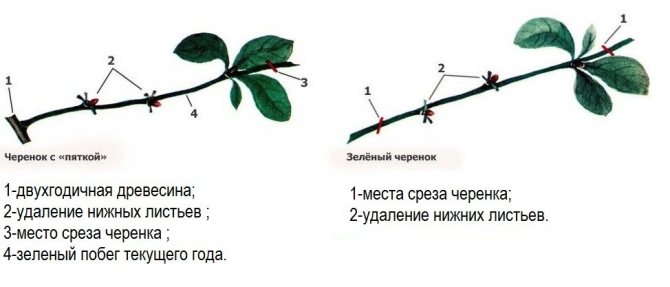

Pit preparation
When planting cherries in the fall, the site is prepared 2-3 weeks before the procedure. The soil is dug deeply and enriched with fertilizers:
- compost (10 kg);
- superphosphate (180 g);
- potassium nitrate (100 g).
These dosages are calculated for 1 m² of the area of the site. You can add a special complex preparation intended for cherries and sweet cherries to the soil. Soil with an acidic reaction is limed. It is recommended to do this in advance - 7-10 days before the introduction of nutrient formulations. Clay or sandy soil for growing cherries is prepared for several years. The first is dug up, scattering sand over the surface of the site, clay is added to the second. In the next 3-4 years, fertilizers are applied to the soil. This can be done in spring or autumn.
The planting hole is dug 2 weeks before the tree is placed in it. It should be deep (60-80 cm) and wide (1 m). A support is installed in the center. Correctly, if it rises above the soil surface by 30-50 cm.Fertile soil is poured onto the bottom of the pit, adding the following components to it:
- rotted compost;
- superphosphate;
- potassium sulfate;
- wood ash.
The thoroughly mixed substrate should form a small hill around the support.
Advice
The introduction of nitrogen-containing compounds and lime into the planting pit is fraught with burns for the roots of the seedling, at this stage it is better to do without them.
Having slightly tamped the soil mixture, sprinkle it with infertile soil on top. Having leveled it well, they pour a couple of buckets of water into the pit, after which they forget about it for 2 weeks. During this time, the soil will settle.
If cherry planting is carried out in the spring, the site and the pit are prepared in the fall. Humus or compost is added to the soil. It is recommended to do this from October to November, depending on weather conditions. In the spring, when the snow melts and the soil dries out slightly, mineral fertilizers, including nitrogen fertilizers, can be added to the pits. They start placing seedlings in them in a week.


The choice of wood material for cuttings
To obtain cuttings are not suitable:
- too old trees (their shoots are weakened and do not have sufficient potential to form their own root system);
- young seedlings (a tree in the growth phase is not yet ripe for vegetative propagation);
- cherries growing in poor soil and suffering from a lack of minerals, primarily phosphorus and nitrogen;
- specimens overfed with mineral fertilizers;
- trees affected by pests or fungal diseases.
Learn when and how to prune cherries in the fall, and when and how to prune cherries in the spring.
The variety of the tree is not of fundamental importance from the point of view of the success of vegetative propagation, but the age of the mother plant must be taken into account... Cherries that have reached full maturity, but are still quite young, will give ideal material for obtaining cuttings. Determining this moment, you can focus on the period of time that has passed after planting the seedling (7-9 years), or the period during which the tree fully bears fruit (2-3 years).


Another good option - use for cuttings the shoots that appear on the stump of a tree cut off last year. Such cuttings are good in that all the force coming from the powerful root system and not wasted on maintaining the missing crown is concentrated in them.
Important! The lower to the ground is the branch from which the cutting is cut, the more potential it has to form its own roots. However, you should not use the old, namely the young branch that appeared in the lower part of the trunk.
For cuttings, you need to choose strong and well-developed shoots that grow on absolutely healthy branches and have a thickness of about 7 mm. The optimal shoot length is 30 cm, and the cuttings should have at least three healthy buds.
Slices are made according to the following scheme:
- lower - at an angle of 45 ° with an indent of 30 mm from the nearest (lower) kidney;
- upper - at an angle of 90 ° at a height of 15–20 mm from the upper kidney.
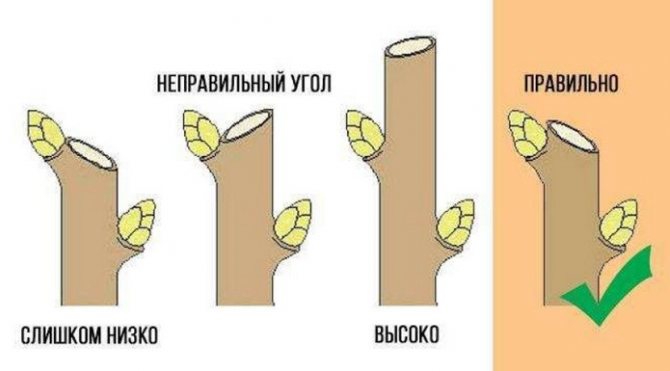

It is important to cut cuttings in dry, but not too hot weather, in the early morning or late evening.
Like any work related to tree pruning, cuttings must be carried out with a tool carefully sharpened and treated with a disinfectant solution, separating the shoot with one precise movement (you should never pull, break off or unscrew the cuttings - this will not only reduce their vitality, but also cause harm mother plant).
If a freshly cut cutting will not be planted immediately, it should be placed in a container with a small amount of water (only the lower bud should be in a humid environment).
Did you know? The Russian word "cherry" and the English word "cherry" are derived from the Latin "cerasi" - fruits from Kerasunt (Giresun). This was the name of the Black Sea town in Turkey, where the ancient Romans first met cherries.
Sapling selection
Best of all, cherry seedlings take root at the age of 1-2 years. In height, the first should reach 70-80 cm, the second - 1 m.
When choosing a seedling, you need to pay attention to the following signs:
- features of the crop variety (winter hardiness, the presence of immunity to diseases and pests);
- the appearance of a young tree.
A quality seedling must be grafted. This indicates its belonging to varietal plants. Such a tree begins to bear fruit earlier, and its berries will taste better.
It is worth stopping the choice on a seedling that has many branches. It will be easier to give the correct shape to its crown. The tree must have a well-developed and straight conductor. Young cherries grow quickly. If the conductor is weak, the stronger branches will compete with it. The presence of several conductors is highly undesirable: if a lot of berries are tied on a tree, it can break between them, and the cherry will die.
The roots of the seedling are also carefully examined. There should be no dry and damaged areas on them. A viable seedling has a developed, strong root system. If it is open, after purchase it is placed in a damp cloth and wrapped with oilcloth (polyethylene) on top. This will protect the roots from drying out. Leaves from the branches of the seedling are immediately removed to prevent dehydration.
It is better to buy a seedling in the fall. At this time, the assortment of varieties in nurseries is the widest.For the winter, the tree is buried in, and in the spring (in April) it is planted in a permanent place. You can do it right into the mud. You should not delay planting cherries. It is important to carry it out while the buds on the tree have not yet woken up. So it will take root faster. Seedlings growing in containers can be planted in May and even June.
What is propagation by cuttings
There are two main ways of plant propagation - seed and vegetative. In particular, you can grow a young cherry tree by planting a bone in the ground, or from a cutting.
The second method has a number of undoubted advantages over the first, because:
- is faster;
- allows you to get a tree that is guaranteed to retain all the characteristics of the mother plant (seed reproduction, when it comes to a hybrid, does not give such a result).
However, cuttings also have disadvantages. So, this method requires the gardener to have certain experience and skills, in addition, until the time of rooting, the cuttings need especially careful care, if not provided, young plants can be lost after the first winter.
Cherry cuttings are carried out in two ways - ordinary rooting in the ground or grafting on a wild stock.
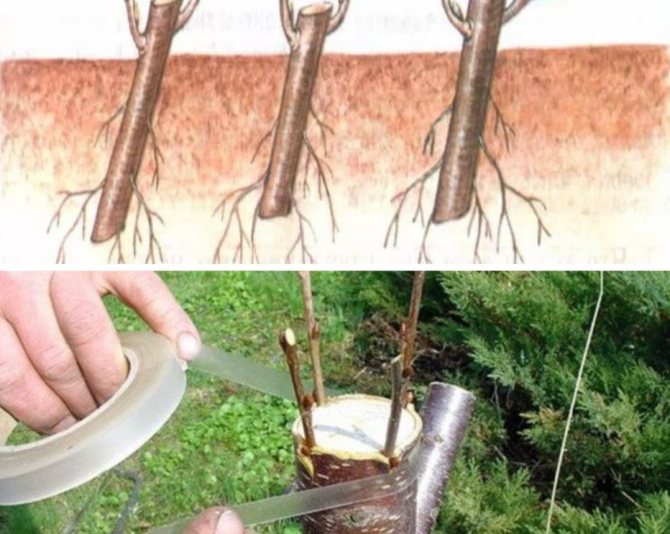

In the first case, the gardener receives a rooted plant, in the second - a cultivar that develops on a more powerful, winter-hardy and unpretentious root system of trees such as ordinary cherry, Magaleb cherry (in common people - Antipka) or wild cherry.
Important! To graft a cherry cuttings, you need to select the correct rootstock, since the upper and lower parts of the resulting budding tree must physiologically match each other. Otherwise, without proper interaction, which ensures the general life rhythm, the grafted plant will not be able to develop normally.
The propagation of cherries by rooting cuttings without using a rootstock is most often used by those gardeners who want to relatively quickly increase the number of fruit trees of their favorite variety without incurring additional costs for the purchase of seedlings or simply rejuvenate a perennial garden.
How to plant cherries
Before being placed in the planting pit, the cherry roots are carefully examined again. Sick and injured areas are excised. Shoots that are too long can be shortened if they do not fit into the prepared pit. Then the underground part of the young cherry is dipped in a bucket of water, where it is kept from 2 to 10 hours, depending on the degree of dryness of its roots. They start planting when they swell.
The tree is placed in a hole so that its root collar protrudes from it by 5-7 cm. Carefully spreading its roots over a mound, they are sprinkled with infertile soil taken from the bottom of the depression. This should be done gradually, from time to time, slightly shaking the cherries by the trunk. So near its roots there will be no cavities filled with air.
Having completely filled up the pit, 1 bucket of water is poured into it. When it is absorbed and the soil settles, the trunk circle is well tamped. A hole is made around the tree with a radius of 30 cm, enclosing it from the outside with a shaft of soil. On the inside, a shallow (5 cm) furrow is drawn around it and watered well again. As the soil subsides in the trunk circle, it will have to be poured. The final stage is mulching the surface of the hole. Peat or humus is usually used for it.
If the buds on the tree have not yet begun to bloom, pruning is carried out after planting. 2-3 skeletal branches are left on the cherry, and the rest are removed on the ring. This must be done flush with the trunk so that hemp does not remain. The wounds are covered with garden varnish. Placing a sweet cherry on the site, in which sap flow has already begun, pruning its crown is postponed for the next year.
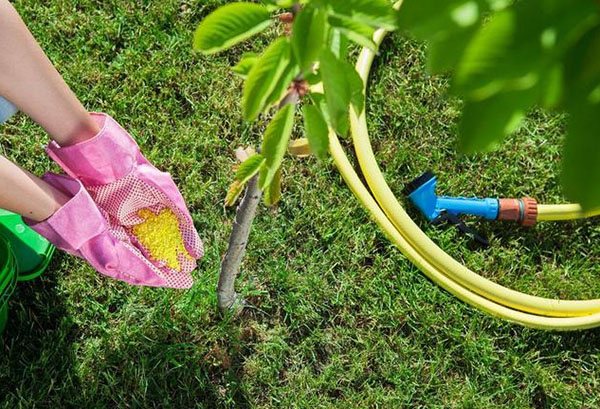

Rooting cherry cuttings
Planting freshly cut or pre-harvested cherry cuttings is carried out in well-dug and loosened soil (the depth of loosening should be at least 40–45 cm, otherwise the young roots will simply not be able to make their way in a dense environment).
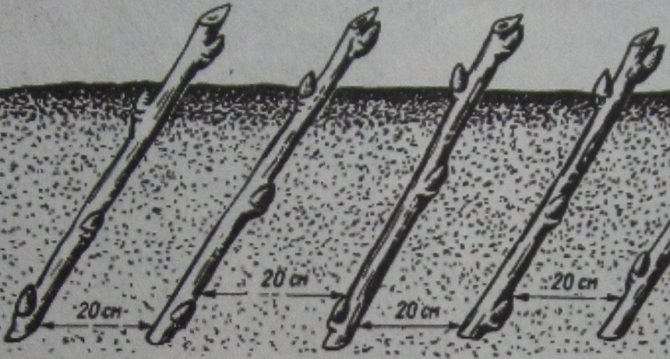

Since the probability of successful rooting does not exceed 10-15%, you need to plant as many cuttings as possible. You can place them in rows, keeping the distance between shoots 15–20 cm in any direction.
You don't need to dig holes for cuttings, it is enough just to carefully bury the shoot in loose soil so that the top of the three buds remains on the surface, and then compactly tamp the soil around the seedling, as if squeezing it into an earthen ring. After planting, the land is watered abundantly and, when the water is absorbed, mulched with peat, humus or sand.
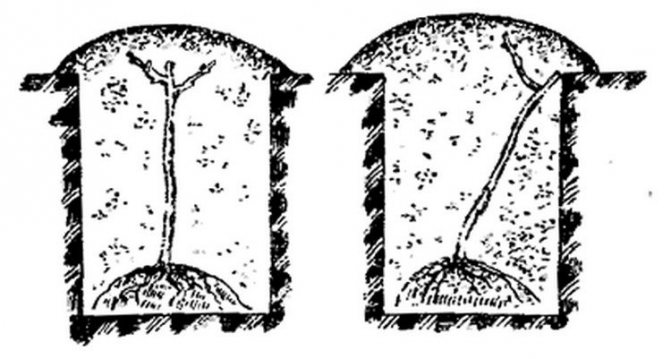

Some gardeners prefer to install the cuttings at a slight slope, believing that this increases the likelihood of successful rooting, others bury the shoots strictly vertically.
There is also another planting method. It involves placing cuttings in pre-dug trenches with a depth of 15 to 20 cm. One wall of the trench should be strictly vertical - it will be necessary to lean the shoot against it. At the bottom of the trench, river sand and peat mixed in equal proportions are placed, filling 1/5 of the entire depth of the groove with this substrate. After the shoots are exposed in the trench (the lower part is not buried, but simply placed on a sandy-peat substrate, the upper bud remains on the surface), the hole is gradually buried in ordinary fertile soil for cherries, periodically tamping. After abundant watering, the depression formed as a result of subsidence of the earth in the process of absorbing water should be sprinkled with an additional layer of earth or mulched.
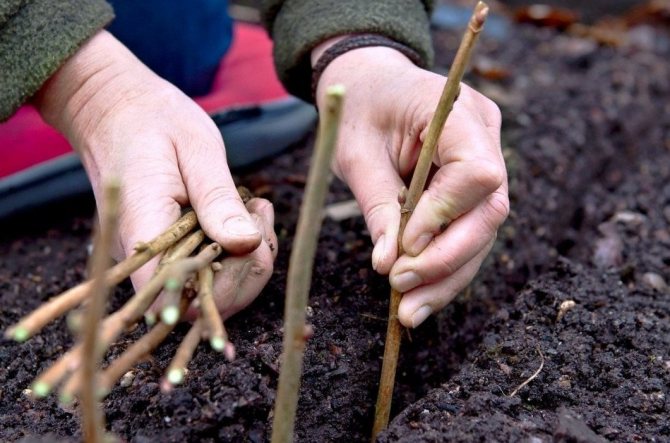

Practice shows that both methods have a right to exist, so everyone can decide for himself which of the possible methods he prefers to choose for himself.
The beginning of the process of root formation occurs 3-6 weeks after planting the cuttings in the ground... First of all, on the lowest part of the shoot, an outgrowth of new cells (the so-called callus) is formed, and then the first roots appear from it. These processes are not visible to the gardener, but when the bud remaining on the surface of the cutting finally starts to grow, it can be concluded that rooting is successful.
Top dressing and watering
For summer residents who already have fruit trees in the garden, caring for cherries will seem familiar. It includes the usual activities:
- watering;
- loosening the soil;
- weeding;
- removal of root growth;
- top dressing;
- pruning.
If you plant cherries correctly, the need to reintroduce potassium-phosphorus compounds into the soil will arise only after 3 years. They begin to feed the tree with nitrogen fertilizers earlier, when the second year of their life on the site goes. In dry form, they are brought in in the spring, as soon as it gets warmer. At the end of May, feeding is repeated, but already in liquid form. When the tree is 4 years old, the soil under it is enriched with phosphorus, potassium and other trace elements. Compositions containing them are brought in in the middle of summer.
Closer to autumn, trees are watered with organic fertilizers - mullein or bird droppings dissolved in water. For the last time during the season, cherries are fed before winter - in September-October. They are guided here by the appearance of the trees: if the leaves turned yellow and began to fly around, the time has come for the introduction of nutrient compositions. They are buried in the soil during the digging process, going 10 cm deep into the ground.
Carefully monitor the cleanliness of the soil under and between trees. When loosening, you need to process an 8-10 cm layer of soil. This care is repeated 3-5 times per season. It is advisable to spend it the next day after each watering or rain.It is convenient to use a garden hoe or cultivator for loosening.
During the growing season, cherries need at least 3 waterings:
- before flowering;
- in the middle of summer, especially if it is dry;
- in the fall, simultaneously with the last feeding.
Before the procedure, it is recommended to loosen the soil under the trees, and after it - to mulch. Autumn watering is required. It should be abundant so that the water saturates the soil by 70-80 cm. This will protect the cherries from freezing. Cold-resistant crop varieties do not tolerate drought well. In extreme heat, such cherries often dry out. Having discovered such symptoms, you cannot hesitate, otherwise it will not be possible to save the tree. Regular and abundant watering will help him withstand adverse weather conditions.
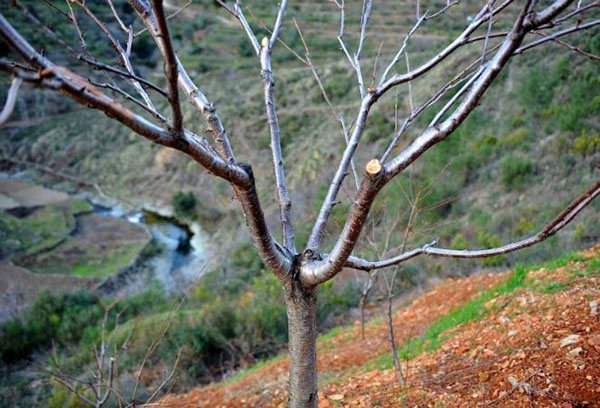

Cherry transplant in spring
A cherry transplant is an undesirable event for her. Moreover, the older the plant, the more harmful the consequences can be and the higher the risk of non-survival. This is due to the inevitable injury of the root system, as well as the loss of most of it in the event of transplanting an old tree.
When can you transplant cherries in spring or autumn
Most gardeners recommend doing this in early spring, especially in cold climates. This is explained by the fact that, transplanted in the fall, the tree will not have time to take root well and will leave weakened in the winter. In places with mild winters and hot summers, it is recommended to transplant in the fall, since the plant here is more likely to dry out in the summer than freeze out in the winter. In any case, when preparing for a transplant, it is better to rely on the experience of local gardeners and specialists.
How to transplant young cherries, including three years old
Transplanting a young sweet cherry is not much different from planting a seedling. The main difference is that in order to transplant a tree, it still needs to be properly dug out of the ground.
Step-by-step instructions for transplanting young cherries
In this manual, we will describe the process of planting a transplanted tree in spring:
- First of all, a young tree must be dug out of the ground. This is done in the fall, since in spring weather conditions may not allow digging the plant before the onset of sap flow. To do this: If the soil is dry, then the day before digging it should be watered to soften it.
- A circle is marked around the tree with a diameter equal to the estimated diameter of the root system. You can do this with a string tied to the trunk and some kind of stick.
- With a shovel, they dig a groove around the plant, focusing on the drawn circle.
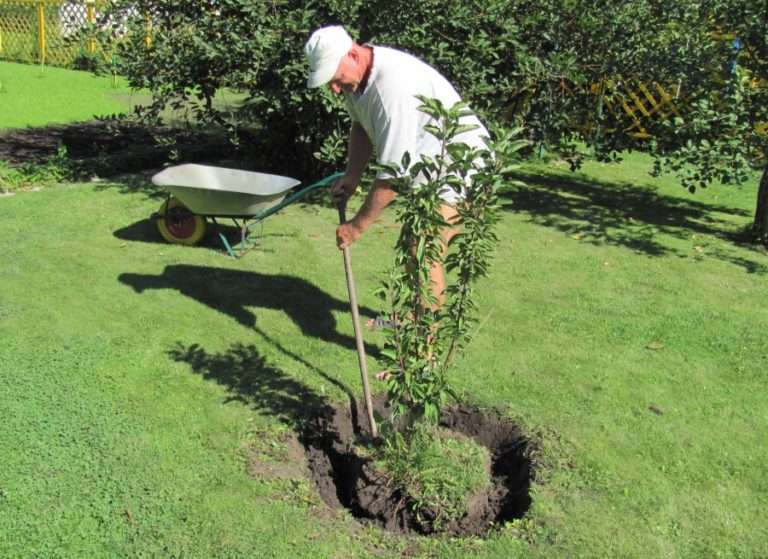

For transplantation, a groove is dug around the plant, focusing on the drawn circle
- The plant is removed from the pit, trying not to destroy the earthen lump on the roots.
- They drop it in the garden for winter storage.
How to transplant an adult cherry tree
If necessary, you can also transplant an adult tree, although experts believe that cherries over the age of seven years will not tolerate this. In this case, you can try an interesting method, which is as follows:
- At the end of September, a circle is marked around the tree, as is the case with a young tree. Its diameter should be such as to capture as many roots as possible, but at the same time the weight of the extracted part was within reasonable limits.
- A sharp shovel with a flat blade cut the roots in half of the marked circle.
- Dig a trench along this half of the circle deep on the bayonet of the shovel.
- In the lower part of the trench, the roots are cut even deeper, onto the bayonet of a shovel.
- Fill up the trench and watered it with water.
- The tree continues to feed on the other half of the roots that remain intact. In the first half at this time, new roots will begin to form, which will fill the inner space of the root system.
- After 3-4 weeks, the same procedure is carried out with the second half of the roots. They are cut, dug in, cut again, buried. Water abundantly for another two weeks and leave the tree until spring.
- At the same time, it is worth taking care of the planting pit for the transplanted plant.
- In early spring, as soon as the weather permits, the plant is dug out of the ground with a lump of young roots and transplanted to a new place.
Unfortunately, there are no illustrations of this method, but there is a great video to watch.
Crown formation
Cherry pruning raises the most questions for gardeners. To carry it out correctly and as painlessly as possible for the tree, the guidance of professionals will help. Whatever the goals - sanitary or formative - the pruning pursues, it is better to do it in early spring, while the sap flow has not yet begun. In summer and autumn, you can continue what you started, getting rid of the shoots that thicken the crown and pinching the tops of improperly growing branches. The root shoots are removed during the entire growing season so that they do not draw strength from the tree.
Annual pruning of cherries allows you to:
- increase its yield;
- improve the quality of berries;
- prevent the development of diseases;
- increase the lifespan of the tree.
In the gardens of Siberia, cherries are given the shape of a bush. This makes it easier for the tree to withstand harsh winters. The optimal number of trunks is 3-5. The top of an annual seedling is shortened over 5-6 buds. This pruning stimulates the development of the lower lateral branches. Sweet cherry is prone to tillering by nature. If you do not get rid of the strong shoots that grow over the graft, it will quickly acquire the desired appearance itself.
A young tree is formed during the first 5-6 years. During this time, you need to lay several tiers (usually 3). In the future, pruning is carried out for sanitary purposes. The height of the tree is maintained within 3-3.5 m, and the length of its skeletal branches is at the level of 4 m. Grinding of berries and the formation of ovaries only on the periphery of the crown indicates the need for rejuvenating pruning. It is carried out in late winter and early spring.
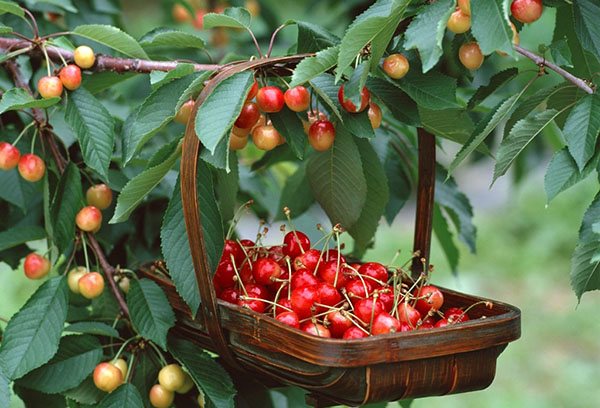

Briefly about the plant system of sweet cherry
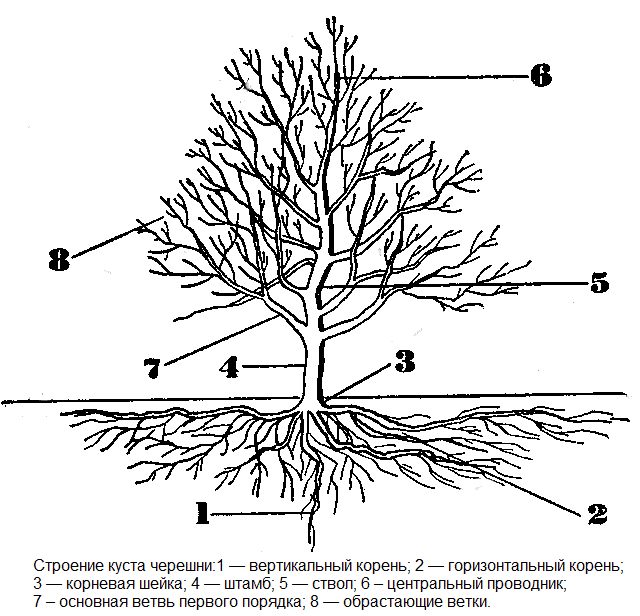

The structure of the cherry bush.
In the early years, the central root system of a young seedling is actively formed.
The main taproot develops. In the future, it grows due to powerful branched lateral appendages, which causes horizontal type of root system an adult tree.
The crown has a predominantly conical or ovoid shape, tapering upward. Leaves are oval, pointed to the tip, with small lateral serrations. Flowering occurs with the arrival of warmth in March - May (depending on the region and variety). The bisexual flowers are collected in small white umbrellas. Fruit ripening from May to July.
Cherry fruits are real drupes, pericarp pulp is fleshy and juicy with colorless juice. Fruit up to 2 cm in diameter, their shapes (oval, heart-shaped, spherical) and colors (from white to black) are diverse, depending on the variety.
Features of autumn care
With the arrival of autumn, you need to take preventive measures against diseases and pests. The fallen leaves are raked up and burned. Trees and the soil under them are sprayed with special preparations, their trunks are whitened to the level of the trunk. It is desirable to process the bases of skeletal branches.
When the trees are completely bare, the last pruning of the season is carried out. To make the cherry easier to endure frost, it is relieved of weak, injured and improperly growing shoots. Annual shoots are cut to ⅓ of the length. Non-skeletal branches are shortened to 30 cm. At this time, it is better to use a saw instead of a secateurs. The sections remaining after it are tightened faster.The procedure must be completed by the end of September. Late pruning is fraught with long-healing wounds that make it difficult for the tree to winter. Saplings are exposed to it in the second year of life on the site. It is dangerous to cut younger trees before winter; it is better to postpone the procedure until spring.
Cherry that has suffered from frost dries up in spring, and its trunk can become covered with cracks, through which infection easily penetrates. To protect the seedlings, they are fenced off with a kind of fence made of stakes and, carefully pulling off the branches, are placed under the covering material.
With a competent approach to choosing a variety, growing cherries in the gardens of the middle lane, the Urals and Siberia will not be difficult for their owners. If you properly care for it, the tree lives on the site for a whole century, early entering the fruiting period. A recent seedling will bear its first berries in 5-6 years. It will take another 4-5 years, and the harvest will be full. Watering, feeding and regular pruning of the tree will allow it not to reduce their volume until the end of its long life.
Unfavorable neighbors for cherries
Probably, many people know that not all the inhabitants of the garden are friendly and can safely grow side by side. There is even a whole section of science that deals with this issue, called allelopathy. Unfavorable neighbors can oppress the tree, retarding development, reducing the amount and taste of the crop.
The following trees and shrubs are unfavorable neighbors for this culture:
- peach;
- pear;
- Apple tree;
- Rowan;
- currant;
- apricot.
Cold protection
Sweet cherry is a southern culture, therefore it often suffers from frost. For so that the garden does not die, you need to do the following:
- Of course, choose frost-resistant varieties, and the best of all are those that are bred in the local climate.
- Feed in a timely manner, however, do not allow the accumulation of excess fertilizers in the soil, because overfed plants do not overwinter well.
- In dry years, water abundantly, in wet years - provide the plant with potash and phosphorus fertilizers, which contribute to the maturation of the wood.
- During spring night frosts, trees can be protected with smoke. Piles of rubbish are laid out in the garden, which are ignited when the temperature drops to 0 ° C. Stop smoking 2 hours after dawn.
Planting a cherry seedling: detailed instructions for a beginner
Adding an article to a new collection
Not sure how to plant cherries correctly? Use these tips - and you will be able to acquire a fruit-bearing tree.
Sweet cherries can be grown from seeds, but this is too long a process, and such a tree, most likely, will not retain varietal qualities - the berries will be small and sour. If you want to get a harvest of tasty and juicy fruits as quickly as possible, purchase a one- or two-year-old grafted seedling from a specialized nursery.
Choosing cherry varieties


When solving this important issue, it is necessary to pay attention to the flowering period of the tree and the fact that many varieties are self-fertile. That is, for a good fruit setting, it is necessary to plant not one, but at least 2 trees of different varieties that would bloom at the same time. To see what this beautiful tree looks like, a photo will help, although who has not seen it live ...
In the southern regions, warmth sets in early, so flowering trees there practically do not fall under frost. In cooler areas, early ripening varieties can be exposed to this trouble, as cherries bloom in spring. But, if you want to taste the berries as early as possible, then, during frosts, you can cover cherry trees with non-woven material, make smoke fires near them, etc.
Here are the early varieties of cherries that are recommended for growing in the Middle Lane:
- Backyard yellow. Yielding, winter-hardy sweet cherry. The fruits have a sweet and sour taste. The variety is self-fertile.
- Orlovskaya amber.Average winter hardiness, the variety has a good yield, resistant to coccomycosis. The average mass of tasty, large yellow-pink fruits is 5.5 g.
- Iput has excellent winter hardiness, is resistant to coccomycosis, and is partially self-fertile. Fruits weighing 6-9 g, dark red, almost black in color. The cultivation of sweet cherries of the Iput variety is preferred by many gardeners.
- Raditsa. The fruits ripen very early. The variety is winter-hardy, high-yielding. To obtain fruits that are dark red, it is necessary to plant a pollinator next to it, since this variety is self-fertile. The tree is weak, has a compact crown.
- Chermashnaya has high winter hardiness. Fruits weighing up to four and a half grams of yellow color. The berries are sweet, juicy. The variety is self-fertile, has good indicators of resistance to fungal diseases.
- Trees of the sweet cherry variety Ovstuzhenka are low, with a dense spherical crown. Fruits with an average weight of 5 grams are dark red. The variety is winter-hardy, fruitful.
Mid-season cherry varieties:
- Fatezh. Winter-hardy, high-yielding variety. The tree is medium-sized, self-fruitless, with a spherical, spreading, drooping crown. The fruits are pink-red, shiny. The taste is sweet and sour.
- Pobeda is a fruitful variety that is resistant to fungal diseases. Good winter hardiness. The fruits are large, of excellent taste, red in color.
- Cherry variety Revna is winter-hardy, partially self-fertile, has excellent resistance to coccomycosis. Fruits of sweet taste are dark red, almost black, when ripening, they do not crack.
Late-ripening cherries, varieties:
- Tyutchevka is winter-hardy, resistant to moniliosis. Medium-tall tree with a spherical semi-spreading crown. Fruits of a dark red color are large, weigh 5.5 × 6 g, excellent taste.
- Revna is a partially self-fertile variety, highly resistant to coccomycosis. The tree is pyramidal in shape and medium-sized. Fruits are almost black in color - dark burgundy, have an excellent taste.
- Bryansk pink is one of the latest varieties. Disease resistant. In the fifth year, it begins to bear fruit. The tree grows to medium size. Fruits are pink on the outside and light yellow on the inside, do not crack.
Description and characteristics of cherries
Sweet cherry is a tree that, in the botanical classification, belongs to the genus plum from the rose family. It is one of the varieties of cherry, and its other names are also known: bird cherry, Prúnus ávium. The Romans called its fruits Kerasunsky, and the Russian name came from the English cherry.
Did you know? In other languages, cherry and sweet cherry are called the same, they are distinguished only by the words "sour" (cherry) or "sweet" (sweet cherry).
Sweet cherry was known as early as the 8th millennium BC. e. on the territory of modern Turkey, Denmark and Switzerland. In the wild, today it can be found in Western Ukraine, in the south of Russia, in the Caucasus, in the center and in the south of Europe, in Turkey and Iran. Mass cultivation in amateur gardens in Russia began in the second half of the 20th century. In total, more than 33 varieties of sweet cherries are known.


These trees can reach 20 meters in height, and they grow very quickly. The crown forms an egg or cone shape. Shoots directed upwards, naked, can be of 2 types:
- with well-defined internodes;
- with poorly expressed internodes.
Why did not the cherry blossom, does not bear fruit: the reasons, what to do?
Sweet cherry blossoms when the average daily air temperature is 10-12º. The temperature should be above 15º during the day. These are the spring months of March-April.
Consider the reasons why the cherry did not bloom:
- No pollination... To do this, you need to plant not one tree on the site, but several. Cherries are not suitable for sweet cherry pollination.
- Incorrect cropping... The crown should be formed in the form of tiers or a bowl at an angle of branches of 50 *. Pruning must be done on time.
- Excess or lack of moisture... During heavy rains with stagnant water, the soil around the cherries should be mulched with a special film.Watering should not be too often once a month in the summer and in September 1 time before the onset of cold weather.
- Incorrect fit... The root collar should not be deeply planted in the ground, or vice versa - be located high. The optimum height is 5 cm above the ground.
- Pests and diseases... The tree may not bloom, as it is affected by the disease.
- Frosty winter... Cherry simply may not survive the winter if the frost resistance of the variety is low and the winter is cold.
- The time has not come... Some varieties may not bear fruit for up to 5 years.
- Wrong place... The sweet cherry may not bloom, since the planting site was chosen incorrectly.
- Feeding... If you do not apply any fertilizers, cherries may stop blooming.
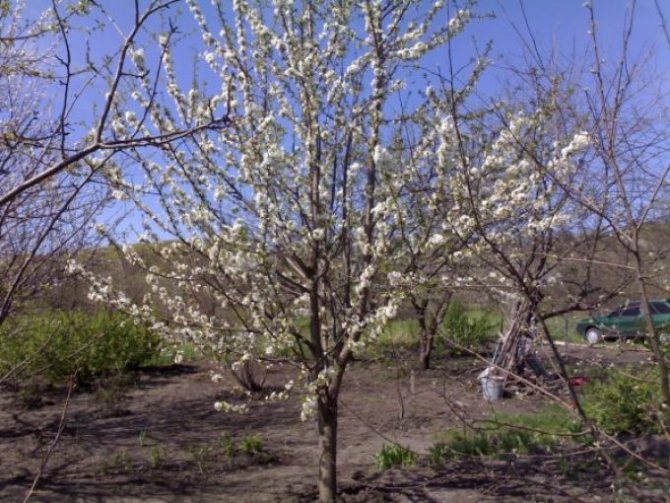

Cherry blossom
Sugar, tasty, large-fruited and healthy varieties


Yaroslavna
The most delicious are those varieties of cherries in which the sugar content is higher than 5%, for example:
- Yulia - the pulp of the berries is juicy, springy, slightly crispy. The tree bears fruit regularly. High yields are rarely removed, but 15-20 kg from an adult tree can be obtained both in a productive year and in a lean year.
- Yaroslavna - record holder for sugar content - up to 14.2%! In fruitful years, one tree produces up to 60 kg of berries. The fruits do not crack when ripe, and after reaching technical maturity, they can remain on the tree for a couple of weeks.
And there are large-fruited varieties, for example, Bull's Heart - the name speaks for itself. Berry weight - up to 8 grams. Dark color, excellent presentation, excellent taste with a slight sourness.
In general, there are more than 4000 varieties of sweet cherries in the world. Therefore, choosing a tree to your own taste will not be difficult!
What problems arise
In the process of tree development, some troubles are possible that interfere with normal growth and fruiting. More details about possible problems and ways to solve them.
Does not grow
Poor seedling growth can be caused by high acidity of the soil or lack of nutrients. If liming is not done in a timely manner, it is recommended to add lime solution to the near-stem zone; form holes in the ground up to twenty centimeters deep. With a lack of nutrients, it is necessary to fertilize with nitrogen, phosphorus and potassium fertilizers.
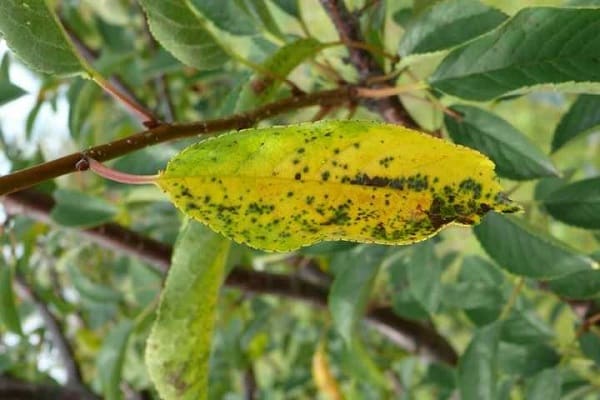

Does not bloom
The lack of colors is due to the following possible reasons:
- the wrong choice of the landing site - a lack of sunlight;
- insufficient development of the seedling - for some varieties it takes about five years before the first flowers appear;
- excessive soil moisture or close occurrence of groundwater.
If the conditions for planting a tree are chosen unsuccessfully, it is necessary to transplant it, otherwise the seedling will be sick for a long time, and it will not be possible to wait for the harvest for a long time.
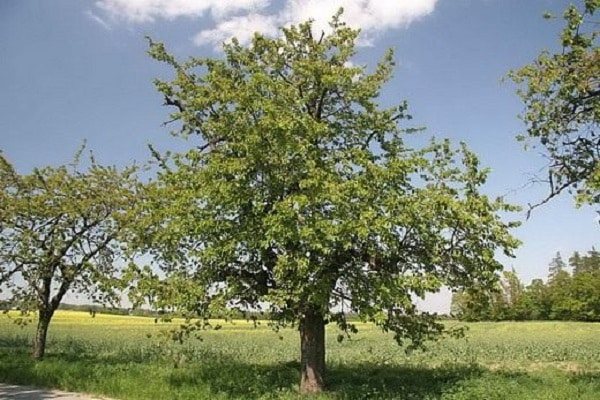

Does not yield crops
The lack of a crop may be due to the following circumstances:
- improper pollination;
- bad weather;
- poor quality fertilizer;
- excessive soil moisture;
- clogged soil, leading to insufficient oxygen supply to the root system;
- high acidity of the earth;
- excessive crown density.
By eliminating the listed problems, the gardener will achieve the long-awaited harvest.
Spend more time in the garden and the trees will delight you with spring flowering and abundant fruiting.


Diseases and pests
Cherry trees are susceptible to fungal diseases: clasterosporia, monoliosis, coccomycosis. Methods for dealing with them involve cutting out the infected parts and burning them. The cleaned wound is treated.
Dangerous enemies of sweet cherry are aphids: black cherry and apple - plantain. Herbal preparations are used to get rid of. Insecticides are used if necessary.
The caterpillars of the five-day, the cherry pipe-worm, and the leaf-rollers are harmful. Preventive treatment against them is best done in the spring.
Cherry berries have excellent taste, are a storehouse of useful substances, there is nothing more beautiful than a flowering cherry tree. And in order to have all this you need to put a little effort and patience.
What to do if the cherries are frozen over?
Both an old tree and a young one can freeze slightly. Young trees are most often affected after the first wintering. If the first frosts struck in the first half of winter, the tree will probably survive this phenomenon normally. The first bitter frost that appears in the middle of winter is much worse. By this time, the tree loses its frost resistance.
Important: You can determine the freezing of a tree by darkened shoots, buds, bark, roots.
When the snow melts, you can check if the roots are frozen. To do this, carefully dig up a small area and make a cut on the wood. If the color has darkened, then the roots are frozen. In the same way, you can check the freezing of the shoots.
If the buds are frozen and darkened, there will be no harvest. They will crumble. This often happens in the spring, when frost starts unexpectedly.
A frozen tree cannot always be saved. There are times when a tree is so damaged that it only remains to uproot it and plant a new one. In most cases, the tree can be healed.
How to reanimate a frozen tree:
- Cut off diseased damaged parts.
- Frost holes need to be cleaned before the spring sap flow, treated with copper sulfate and garden pitch.
- Trunk circles must be mulched with humus.
- A frozen tree needs special care. This is frequent watering, weeding and loosening of the soil.
- If the frozen cherry blossoms, 1⁄4 of the flowers are left, the rest of the ovaries are removed. This is done so that the cherry regains its strength, and does not waste it on the fruiting process.
Cherry - cherry's friend
Sweet cherry is very thermophilic, but now in Russia varieties have been bred that grow and bear fruit well in harsh climatic conditions.
Among the latest achievements of our breeders are the varieties ‘Fatezh’, ‘Chermashnaya’, ‘Sinyavskaya’ and ‘Crimean’. Over the past ten years of observations, the yield on cherries of these varieties was, on average, twice as high as on cherries.


Sweet cherry, or bird cherry (lat.Prunus avium) - a woody plant (up to 10 meters high) from the Rosaceae family, grows wild in the forests of Ukraine, southern Russia, Crimea, the Caucasus, and is also widespread in culture.
Sweet cherry, like its close relative cherry, belongs to the Rosaceae family. True, sweet cherries have a number of advantages.
Thanks to the majestic crowns, leaves of different shades and bright berries, it is decorative not only in spring, but throughout the summer.... She has a rich palette of colors - from pale pink and yellow to almost white, from bright and dark red to almost black.
- Sweet cherries, unlike cherries, do not suffer from coccomycosis and moniliosis.
- Pests do not love her so much and only attack in dry years. And finally, cherries are much tastier and healthier than cherries.
Leaves are short-pointed, elliptical-ovate, serrate, slightly wrinkled; petioles with two glands at the base of the plate, up to 16 cm long.
White flowers in umbrellas. There are five sepals and petals, many stamens, one pistil.
The fruit is a sweet, spherical or slightly heart-shaped black, yellow or red drupe, in wild plants it is smaller than in cultivated ones, up to 2 cm in diameter.
Cherry blossoms in late March - early April, bears fruit from the second half of May.
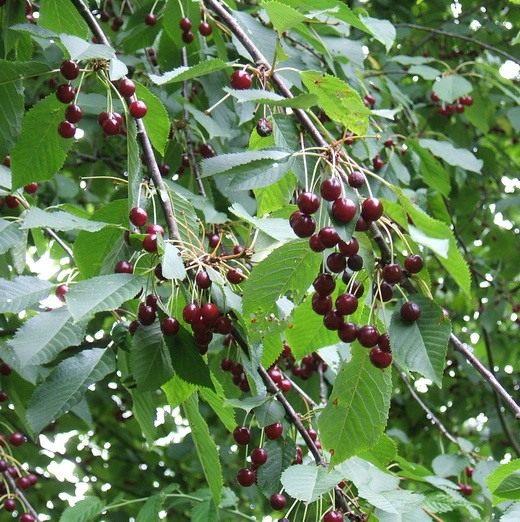

Landing
As usual, you need to start by choosing a landing site. Even if you have a winter-hardy variety, the site should be protected from northern winds.... A good option is gentle, southern or southwestern slopes, as well as places located on the south side of buildings. A small elevation is desirable (but not a hill), it can be made artificially by raising the soil level by half a meter. Sweet cherry is a light-loving crop.
Basic requirements for the soil: sufficiently fertile, well aerated, moisture-absorbing and moisture-permeable, by type - light medium loamy or sandy loam... Heavy clayey, peaty soils, as well as deep sandstones are unsuitable. Sweet cherry is demanding on moisture, but does not tolerate stagnant water, even for a short period. Therefore, it cannot be planted in areas with a close occurrence of groundwater.
For cross-pollination, at least 2-3 varieties are planted on the site. It is very good if cherries grow in the garden, the flowering time of which coincides with the cherry blossom.
Saplings are planted in early spring before the buds swell, but you need to prepare for this in the fall. The bottom of the planting pit (depth 50-60 cm), width 80 cm) is loosened, 1-2 buckets of humus are poured, mixed with the top layer of earth and left. In the spring add 0.3-0.4 kg of superphosphate, 100-120 g of sodium sulfate (1 kg of ash) to the pit and mix. Cherries do not need a lot of fertilizer. This can lead to the formation of very strong growths, which often do not have time to mature by the end of the growing season and freeze in winter.
If the seedlings ate a little during transportation, immerse them after cutting the roots in water for 6-10 hours.
Deep planting is absolutely not permissible for cherries.... In order for the root collar to be at the level of the soil, raise the seedling during planting by 4-5 cm, because in the future the soil will surely settle a little. Make a hole around the edges of which form a roller, pour a bucket of water there. After watering, mulch the soil with peat or humus. If the seedling is two years old, with a branched crown, shorten the branches, subordinating them to the central leader. This can be done only at early planting dates. If you are late, then you cannot cut the seedlings. Reschedule this operation until next spring. The distance between trees must be at least 3 m.
Excessive, prolonged growth of sweet cherry shoots in autumn is undesirable. At the same time, the winter hardiness of plants is significantly reduced. Therefore, fresh manure and large doses of nitrogen are recommended, and the tree should be fertilized only in spring, no later than April-May. All work on tillage in the near-trunk circle must be completed by mid-September... Phosphorus fertilizers will help to prepare the tree for winter, which is applied in September (40-60 g of granular superphosphate per 1 sq. M of the crown projection area).
The growth of shoots in sweet cherry is intense, so it has to be restrained by annual formative pruning.... It is carried out only in early spring before the buds swell. This should not be done in autumn or winter. The gardener's task is to keep the tree within certain limits. During the growth period before the beginning of fruiting, annual shoots are shortened by 1/5. At the age of 5 years, due to weak branching, the tree is rarely thinned out. In the future, be sure to remove all the branches going inside the crown, poorly located branches, prevent the formation of sharp forks. For sanitary pruning, remove broken, diseased and dry branches with the obligatory cleaning of the cuts and processing them with garden putty. In addition, in autumn and spring, whitewash the trunks and bases of skeletal branches, cover them for the winter with spruce branches or other material from rodents.
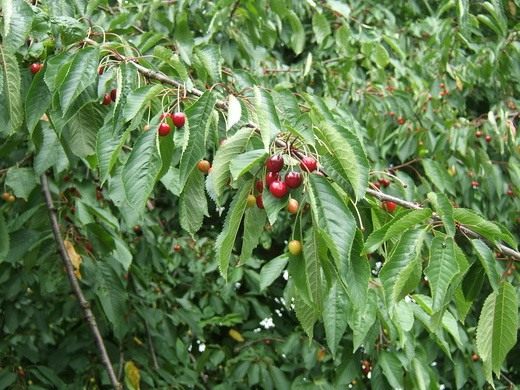

Care
During the summer, 3 additional waterings are carried out, each time mulching or loosening the soil crust... Pruning is carried out only in the spring, removing annual branches, the central conductor should be 20 cm higher than the skeletal branches.
While the garden is young, strawberries, flowers and berry bushes can be planted in the aisles, but the cherry crowns will quickly close, so this type of planting should not be counted on for many years.
In the year of planting, the soil is maintained as black fallow. In this case, weeds are completely destroyed during the entire growing season. For the next year, the diameter of the trunk circle is at least 1 m.Further, each year, another 0.5 m is addedThis area must be kept completely free of weeds and covered with mulching material.
Sweet cherry blossoms early and bears fruit, this requires large reserves of nutrients in the soil; they are replenished in the fall, combining organic and mineral nutrients; the amount of fertilizers is determined after analyzing the soil.
It is advisable to embed fertilizers to a depth of 20 cm. Dry fertilizers can have a negative effect: in arid regions, it is advisable to first dissolve mineral fertilizers in water and only then add them to the zone of greatest accumulation of suction roots.
It is useless to directly add solutions under the stem: there are roots that are practically unable to absorb nutrients.
Productivity can be increased by using green manure... For this purpose, they select legumes - vetch, lupine, peas, sainfoin, etc. We also need honey plants - mustard and phacelia. Sowing of green manure begins in the 2nd half of the growing season in order to obtain a normal grass stand for mowing and embedding in near-stem circles in the fall.
Both young and adult trees react painfully to lack of moisture in the soil, additional watering will never harm, but they are especially useful before the onset of sub-winter cold weather, and watering is not accidentally called sub-winter: there is no need to rush to carry out them. The time should be chosen before loosening the soil.
Podwinter watering is much more useful and effective than spring watering, while the soil is saturated with moisture to full moisture capacity. If it was not possible to carry out such watering, then in the spring, before flowering, this serious miscalculation must be corrected.
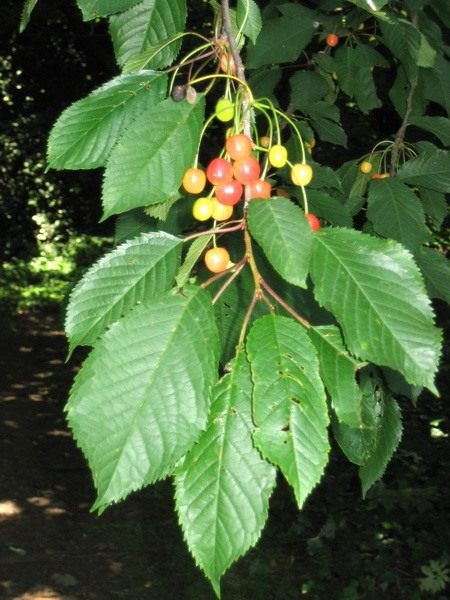

Pruning
Cherry trees have a powerful trunk, a strong skeleton with strong skeletal branches, with a pronounced tiered distribution on the trunk, especially branches of the first and second order, which in most varieties branch off at an angle of 40-50 °. The shape of the crown can be different: pyramidal, broadly spreading, spherical.
In cherries, they form predominantly sparse-tiered and cupped crowns, as in cherries.... A sparse-tiered crown is created on varieties with good branching and is formed from 5-6 main skeletal branches. In the first tier, branches of the first order are left, 2 of which can be placed adjacent, and the third should be 15-20 cm higher than the first two. In the second tier, 2 branches are left. The second tier is placed at a distance of at least 70 cm from the lower first tier. Above 2 branches of the second tier, a single branch is formed at a distance of 30 cm from them. In this case, the central conductor is cut out one year after the formation of the last single branch.
It is important to pay special attention to the branching angles when forming the cherry crown., since the wood is rather fragile and when a branch breaks off, a deep wound is formed along the entire length of the trunk to the soil, which often leads to disease and even death of the tree. The most desirable angle of branching is 45-50 °. A whorled arrangement of branches is not allowed. Semi-skeletal branches of the crown form two on the branches of the lower tier. They should be placed at a distance of at least 50 cm from the trunk and from each other. It is better to form semi-skeletal branches from branches that have an inclined position, or give them such a position with a garter. When forming a cupped crown, 4-5 skeletal branches are laid above the stem.
Sweet cherries, like cherries, are prone to active growth in the first 5 years and form long annual growths that must be shortened, leaving no more than 40-50 cm of their length... On strongly branching young trees, summer pruning of shoots is used, which helps to accelerate crown formation and increase productivity. This is due to the fact that on long branches flower buds form in the middle part of the branch, and after summer pruning, their number increases, and the saturation with bouquet branches also increases.
For the formation of semi-skeletal branches, pruning is carried out as soon as the shoots reach a length of 70 cm, they are shortened by 20 cm, taking into account the subordination of the shoots. Shoots that are not used in the formation of the crown skeleton are shortened to a length of 20-30 cm. Cherry crowns must also be shortened in height to 4-5 m, cutting off the skeletal branches above the outer branch.
After pruning, the wounds must be treated and covered with garden varnish, since the cherry has abundant gum flow.
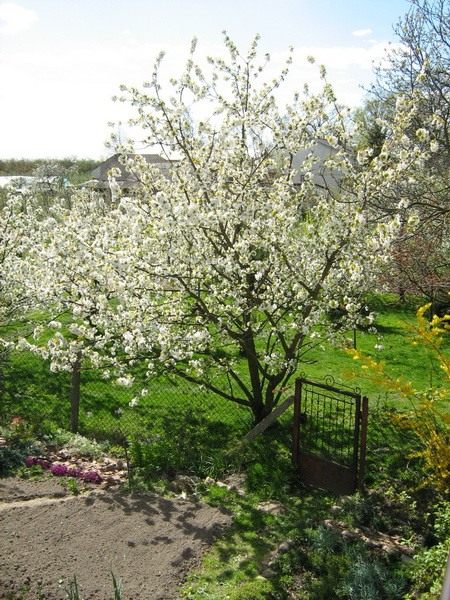

Cherry propagation
Cherry is propagated by seeds and grafting... It must be remembered that when propagated by seeds from over-pollinated varieties, most cherries have inedible fruits. Wild cherries are propagated by seeds to obtain rootstocks. Wild cherry stock is compatible with all varieties.
The best and frost-resistant stock for sweet cherries is common sweet cherry... Such trees are not very tall, are distinguished by increased winter hardiness, increased productivity and easily tolerate the close standing of groundwater. The disadvantage is the increased formation of root growth.
To grow the stock, the seeds are sown in the ground in early spring. To prevent the seedlings from overgrowing, they are sown into the ground rather thickly, with a distance between the lines of 10 cm. On sandy loamy loamy soils, seeds are sown to a depth of 5 cm. With the emergence of seedlings, they are thinned out, leaving cherry seedlings in 3-4 cm. The soil near the seedlings is necessary keep it clean, loose, and remember to fight rodents.
Cherry cultivars are usually propagated by grafting... The most common method is budding. Usually it is held in the second half of July - early August. From fruiting trees for budding, shoots are taken with a length of at least 40 cm, leaving a base with 6-7 buds when cut. The short shoots are mostly flowering and are not used for budding.
You can inoculate cherries with an eye without wood and with wood. The wood-free method usually gives the best results. Cherries can have a large percentage of non-rooted eyes, so it is better to plant several eyes on each stock.
How to protect cherries from birds?
Growers know that growing a good harvest is half the battle. It is important to save it. And first of all, from the birds, which literally in an hour are able to destroy the crop. No wonder the cherry is called "bird cherry". What they don't think up against the birds: they install stuffed animals, rattles, mirrors, hang foil, reflective tapes, shiny CDs, Christmas tree garlands. Plush cats are planted on trees, light blue flags are hung (it is believed that birds are afraid of this color). They stretch a wire between the trees. Yes, it all helps, but for a short time. Birds quickly understand everything, and, not being afraid of "horror stories", again sit down on cherries. Nets that cover trees can really help. They are commercially available, lightweight and comfortable.
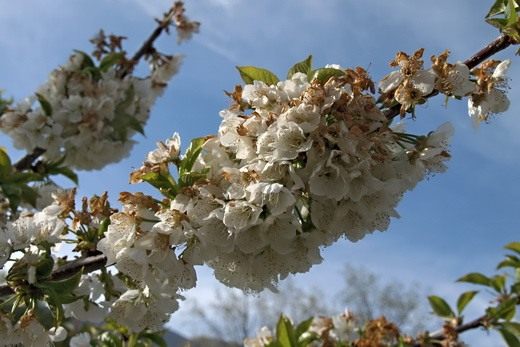

Varieties
Golden loshitskaya... The variety was bred from seedlings of the Denisena variety, yellow from free pollination. The tree is vigorous. The crown is broadly pyramidal, somewhat spreading with age, strongly branched, the foliage is good. Blooms in medium terms. The variety is self-fertile. Good pollinators are the varieties Zhurba, Severnaya, Narodnaya, Denisena yellow. Fruits are smallish (3-3.5 g), round-heart-shaped, cream-colored, sometimes with a slight pale pink tan on the sunny side. The pulp is tender, sweet, with a light refreshing pleasant acid. The stone is small, ovoid, well separated from the pulp. Begins fruiting in the 3rd year after planting. The fruits ripen in early July. The variety is winter-hardy, medium-resistant to coccomycosis, high-yielding.
People's. The variety was bred from Pashkevich's cherry seedlings from free pollination. The tree is of moderate growth, the crown is broad-pyramidal, densely covered with overgrown branches. Blooms in medium terms.The variety is partially self-fertile, with cross-pollination the percentage of useful ovary is much higher. The best pollinators are the Zolotaya Loshitskaya and Osvobozhdeniye varieties. Fruits are medium in size (4 g), round. The skin is dark cherry or almost black, shiny. The pulp is dark red, juicy, tender, of excellent taste. The juice is highly colored. The stone is round-oval, small, well separated from the pulp. Begins fruiting in the 3rd year after planting. The fruits ripen in early July. The variety is highly winter-hardy, resistant to coccomycosis, fruitful.
Zhurba (Snow Maiden). The variety was bred by sowing yellow Denisena cherry seeds from free pollination. The tree is of medium height, the crown is broad-pyramidal, with age, the lower branches hang down somewhat. Blooms early. The variety is partially self-fertile. Good pollinators are the varieties Narodnaya, Severnaya, Zolotaya Loshitskaya, Osvobozhdeniye. Fruits are medium-sized (3.5 g), heart-shaped. The skin is dull white. The pulp is light yellow, medium-dense, juicy, sweet, pleasant taste. The stone is small, well separated from the pulp. Begins fruiting in the 4th year after planting, ripens in the first decade of July. The variety is highly winter-resistant, moderately resistant to coccomycosis, high-yielding annually.
Muscat. The variety was bred from Pashkevich's cherry seedlings from free pollination. The tree is medium-sized, branches relatively strongly, forming a wide-pyramidal crown with densely spaced overgrowing branches. Blooms in medium terms. Self-fertility is low. The best pollinators are Severnaya and Zolotaya Loshitskaya varieties. Fruits are medium-sized (3.8 g), round. The skin is purple-black, shiny. The pulp is dark red, medium density, sweet, with a nutmeg flavor, the juice is strongly colored. The stone is medium in size, well separated from the pulp. Begins fruiting in the 4-5th year after planting. The fruits ripen in the first half of July. The variety is winter-hardy, moderately resistant to coccomycosis, fruitful.
Syubarovskaya. The variety was bred by crossing the Northern cherry variety with the Pobeda cherry variety. The tree is vigorous, with a wide-pyramidal crown. Blooms early. The variety is self-fertile. The best pollinators are Severnaya, Narodnaya, Muscatnaya varieties. The fruits are large (4.6 g), heart-shaped. The skin is dark red with a waxy coating. The pulp is dark red, medium density, sweet taste. The juice is intensely colored. The stone is medium in size, well separated from the pulp. Begins fruiting in the 4th year after planting. The fruits ripen in late June - early July. The variety is winter-hardy, resistant to coccomycosis, fruitful.
Gronkovaya. The variety was bred by pollination of the Northern cherry variety with a mixture of sweet cherry pollen. The tree is medium-sized, with a broad-pyramidal crown of medium density. Blooms early. The variety is self-fertile. The best pollinators are Narodnaya and Krasavitsa varieties.
Zhurba. The fruits are large (4.8 g), heart-shaped. The skin is dark red with a waxy coating. The pulp is dark red, medium density, high palatability, the juice is intensely colored. The stone is small, well separated from the pulp. Begins fruiting in the 4th year after planting. The earliest ripening variety of the Belarusian selection (2-3rd decade of June). The variety is winter-hardy, resistant to coccomycosis, fruitful.
North... The variety was bred by sowing seeds of cultivated cherries from free pollination. The tree is medium-sized, with a back-pyramidal compact, but not dense crown, with a large number of overgrown branches. Blooms in medium terms. The variety is self-fertile. Good pollinators are the varieties Zolotaya Loshitskaya, Krasavitsa, Muscatnaya, Narodnaya, Pobeda. Fruits are medium (3.4 g), blunt-hearted. The main color of the skin is whitish, with an intense pink blurred blush. The pulp is light pink, delicately sweet, with a slight pleasant acidity. The stone is medium, well separated from the pulp. Begins fruiting in the 4th year after planting. The fruits ripen in mid-July.The variety is highly resistant to coccomycosis, high-yielding annually.
Festivalnaya... The variety was bred by sowing the seeds of the American Krasavitsa variety from Ohio from free pollination. Zoned in Lithuania (for home gardening). The tree is vigorous, with a sparse spreading crown. Blooms in medium terms. The variety is self-fertile. The best pollinators are Zaslonovskaya, Zhurba, Krasavitsa, Muscatnaya varieties. Fruits are medium (3.5-4 g), heart-shaped. The main color of the skin is cream, the integumentary color is intensely pink. The pulp is creamy, tender, juicy, sweet, with a slight pleasant acidity. The stone is small, well separated from the pulp. Begins fruiting in the 5th year after planting. The fruits ripen in early July. The variety is winter-hardy, high-yielding.
Zaslonovskaya... The variety was bred from seedlings of the Denisena variety, yellow from free pollination. Zoned in Lithuania (for home gardening). The tree is medium-sized, with a broad-pyramidal compact crown. Blooms early. The variety is self-fertile. Good pollinators are the varieties Pobeda, Zhurba, Osvobozhdeniye. Fruits are medium (3.5-4 g), round-heart-shaped, cream-colored. The pulp is tender, juicy, sweet, with mild refreshing acid. The stone is small, well separated from the pulp. Begins fruiting in the 5th year after planting. The fruits ripen in the third decade of June. The variety is winter-hardy, fruitful.
Beauty... The variety was bred from seedlings of the American Krasavitsa variety from Ohio from free pollination. The tree is vigorous, with a sparse spreading crown. Blooms in medium terms. The variety is partially self-fertile. Good pollinators are the varieties Severnaya, Likernaya, Zhurba, Drogana yellow. The fruits are large (6-7 g), heart-shaped. The main color is light yellow, the integumentary color is crimson-red with a bright cherry-red blush on the sunny side. The pulp is creamy, medium density, juicy, sweet, with a refreshing acidity. The stone is small, well separated from the pulp. Begins fruiting in the 3rd year after planting. The fruits ripen in early July. A variety that freezes in severe winters, resistant to coccomycosis, medium-yielding.
Victory... The variety was bred by sowing seeds of black Gaucher cherries from free pollination. The tree is vigorous, with a sparse, slightly spreading crown, with a large number of overgrown branches. Blooms in medium terms. The variety is practically self-fertile. Good pollinators are Severnaya, Muscatnaya, Zolotaya Loshitskaya varieties. The fruits are large (7 g), blunt-hearted. The skin is dark red, shiny. The pulp is dark red, juicy, firm, sweet, with a subtle pleasant acid. The stone is small, well separated from the pulp. Begins fruiting in the 4th year after planting. The fruits ripen in late June and early July. The variety is weakly winter-resistant, moderately resistant to coccomycosis, medium-yielding.
Valery Chkalov... The variety was bred in the Michurin Central Genetic Laboratory, (a seedling of the Rosovaya cherry variety). The tree is vigorous, with a wide-pyramidal crown. Blooms early. The degree of self-fertility is low. Pollinators - varieties Red dense, Syubarovskaya, Narodnaya, Zhurba. The fruits are large (7 g), heart-shaped. The skin is dark red, shiny. The pulp is dark red, juicy, firm, sweet, with a refreshing acidity. The juice is colored. The stone is medium in size, well separated from the pulp. Begins fruiting in the 4th year after planting. The fruits ripen in the third decade of June. The variety is relatively winter-hardy, medium-resistant to coccomycosis, medium-yielding.


Diseases and pests
Coccomycosis. It affects mainly leaves, less - shoots, stalks and fruits. It causes the greatest damage in rainy years. In June, small red-brown spots appear on the leaves. At first, they are small, then increase in size, merge, often occupying most of the leaf blade. With a strong defeat by coccomycosis, the leaves fall prematurely, and secondary growth of shoots begins.This reduces the yield, delays its ripening, weakens the plants, and reduces their winter hardiness. The fungus hibernates in the tissues of the affected leaves.
Moniliosis. Popularly called gray rot or monilial burn. The disease affects all stone fruit crops, causes drying of flowers and fruit rot. More and more branches dry out during the summer. Severe damage to shoots and branches can kill the entire tree. In humid weather, gray pads with fungal spores form on the ovaries. Over time, the fruits become covered with the same merged pads, wrinkle and dry out.
Control measures. Protective treatment with 1% Bordeaux liquid is carried out immediately after flowering, then 2 weeks after harvest. At the same time, the affected shoots, fruits and fallen leaves are removed and destroyed, and gum wounds are treated. Instead of Bordeaux liquid, other approved fungicides are also suitable.
Clasterosporium or perforated spot - affects buds, flowers, leaves, shoots and branches. On the leaves, the disease manifests itself as brown spots with a darker border around the edge. They fall out, causing holes to form. Spots on shoots cause tissue death, gum removal, fruits lose weight or dry out completely. Infected leaves fall off prematurely. The fungus hibernates in the tissues of shoots and cracks in the bark.
Looking forward to your advice!
Links to material:
Collection, transportability and storage of crops
The fruit should be at the optimum ripeness stage - not overripe, but ready to eat. To keep the sweet cherry longer, do not tear it off the stalk. Do not throw, but carefully put the berries in a container. If you provide them with a temperature in the range of 0 ... + 4 ° C, then the shelf life increases to 2 weeks.


Before sending for storage, remove overripe, damaged, crumpled fruits, place the rest in a plastic bag
conclusions


Follow the rules of planting and care, and cherries will thank you with a generous harvest!
In order to grow cherries in a garden plot, you must follow simple rules for planting and caring for a tree. It doesn't matter if you are a venerable gardener or a beginner, if there is a desire and a little bit of hard work, then cherry fruits from your own garden will soon appear on your table.
Prophylaxis
Proper planting and caring for a seedling in the first years of life will help protect an adult tree from many diseases.
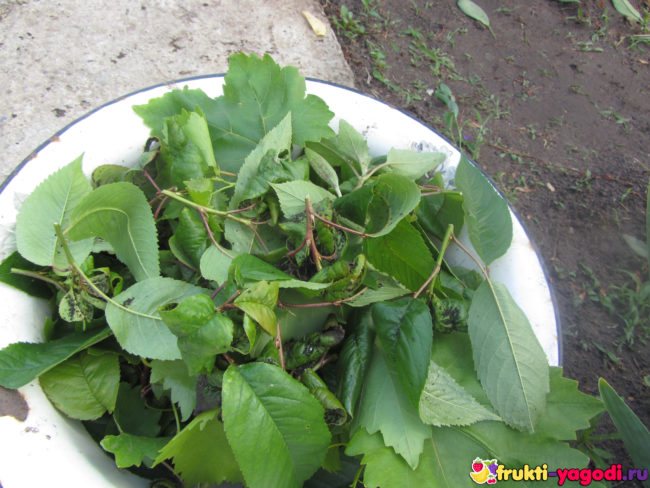

Aphids love cherry leaves. Pay attention to this!
Against most of the main pests: cherry weevil, hawthorn, moth, ringed silkworm, aphids - has proven itself well treatment (spraying) with a solution of 10% karbofos (another insecticide) in early spring before the formation of flower buds, as well as cleaning from the trunk of old bark and cultivating the soil in the near-trunk circle.
When is it better to plant cherries
Cherry planting dates in spring
Sweet cherry is a popular fruit crop that attracts both amateurs and gardening professionals. If you decide to grow this tree on your site, you should familiarize yourself with the planting rules, agrotechnical cultivation techniques and the basic requirements for caring for this crop. You can plant cherries both in spring and autumn.
In the spring, you need to be in time with planting in a short period of time between warming up the soil and the beginning of sap flow. In the south, unfortunately, this is not always possible: in some years, spring comes rapidly, and sometimes the buds begin to swell when the ground has not yet warmed up to the depth required for planting cherries. But in the northern regions, the springs are long, so it is better to plant cherries there in the spring.
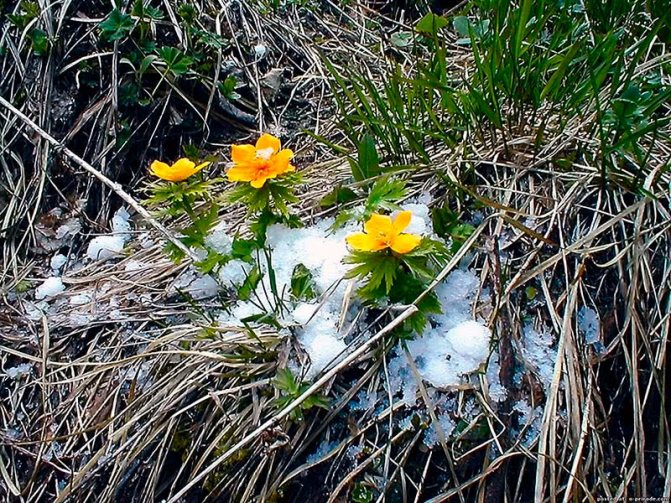

Dates of planting cherries in the fall
In autumn, the time period when cherries can be planted can last from 4 to 8 weeks: this error indicates the dependence of this process on climatic and weather conditions.In regions with warm winters, the autumn planting of cherries can be carried out within two months from the end of September, and in areas with a more severe climate, planting of cherries with open roots is carried out from the end of the second decade of September to mid-October. If the seedlings were purchased earlier - in the first or second decade of September, then when buying and transporting the seedling, you should take measures to protect its root system from drying out: first wrap the lower part of the seedling with wet burlap, and then with polyethylene.
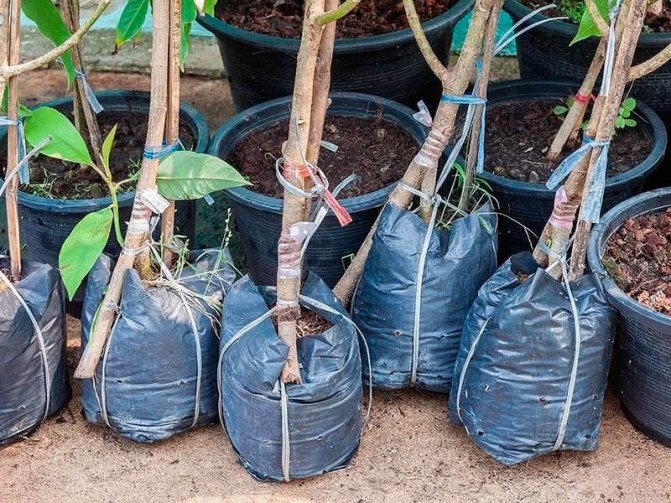

Selection of varieties for different regions
When growing cherries, it is extremely important to take into account its winter hardiness. In order for a tree to survive the winter safely, you only need to choose varieties that are zoned in a particular region. A temperature of minus 20 degrees is enough for the cherry seedling to die.
Cherry varieties for different regions:
| central region | Far East | Siberia | Northwest region |
| Bryanochka | Sweet pink | North | Teremoshka |
| Valery Chkalov | Sakhalin | Michurina | Rechitsa |
| Italian | Ordynka | Kozlovskaya | Dawn |
| Beauty Zhukova | Francis | In memory of Astakhov | Leningrad black |
| Iput | Dragana yellow | Fatezh | Bryansk pink |
| Pink sunset | Ariadne | Symphony | Jealous |


